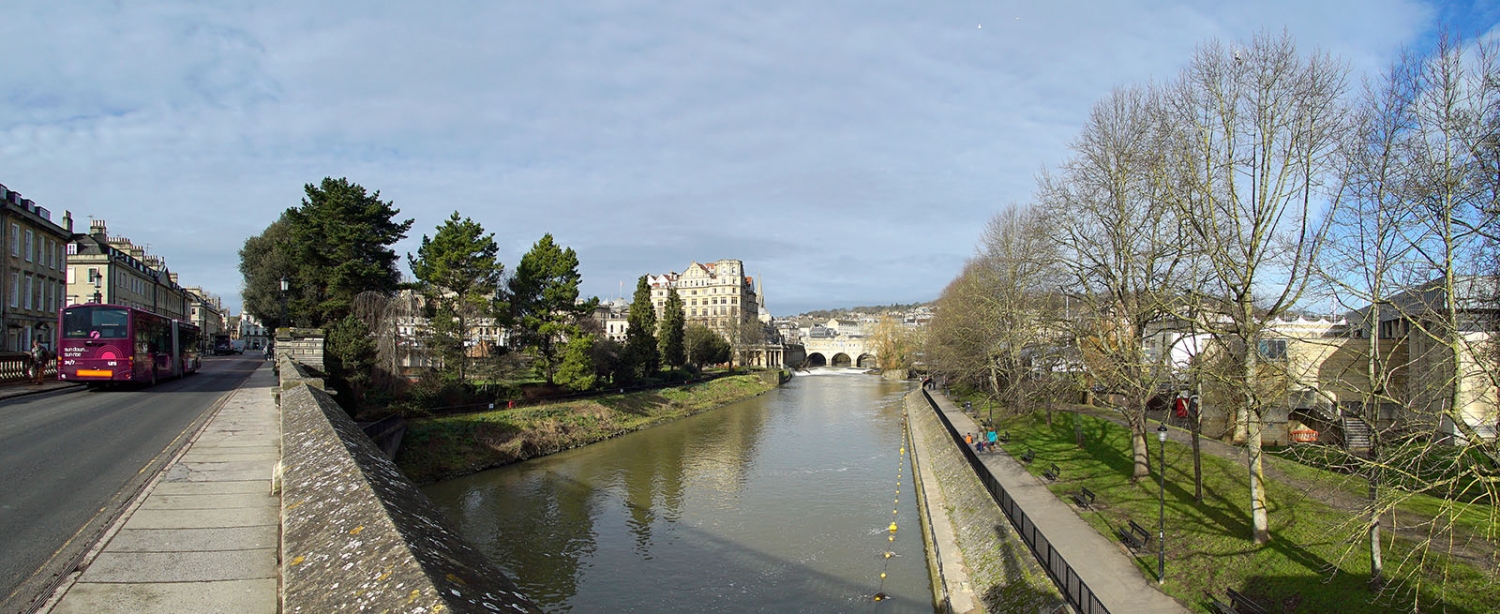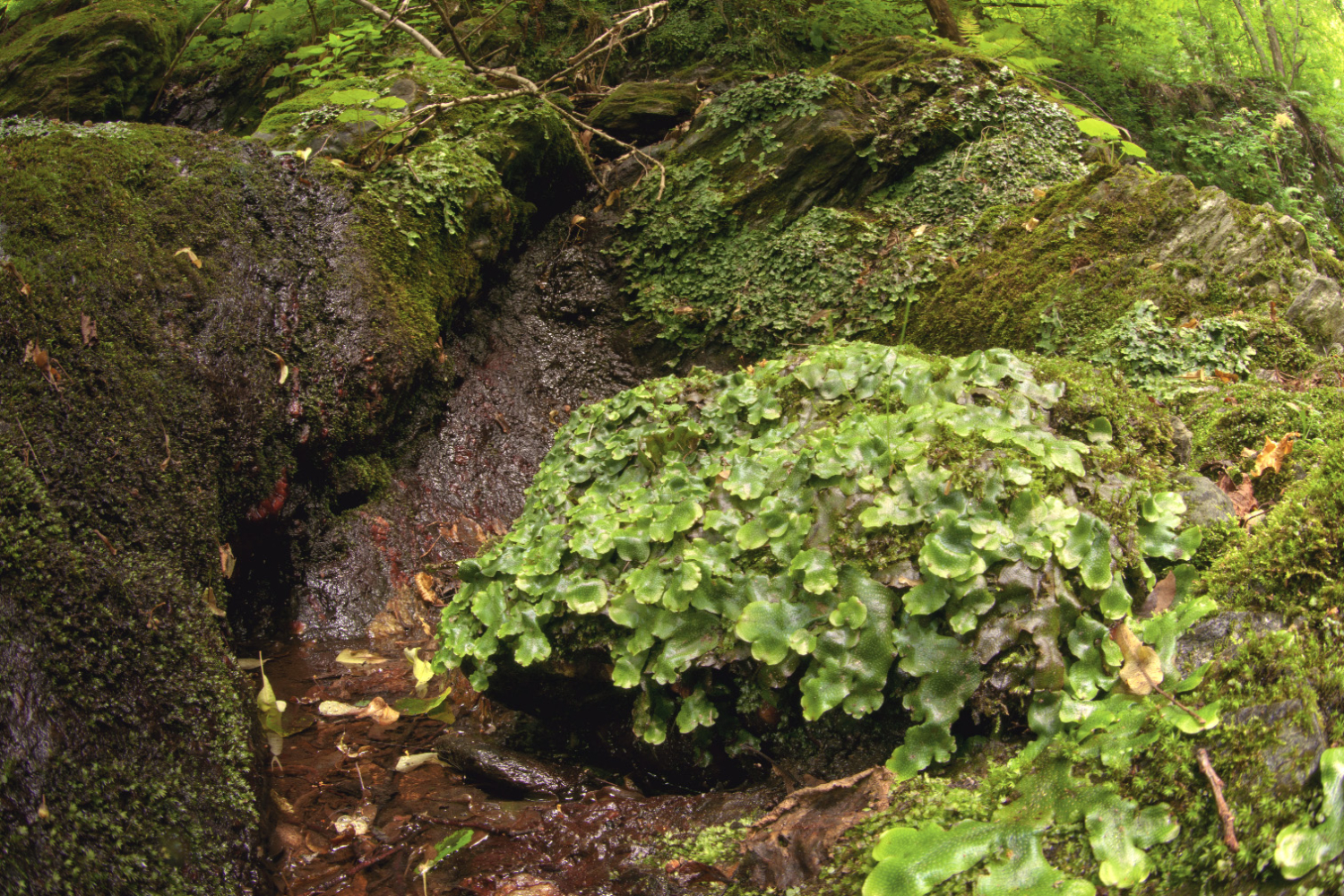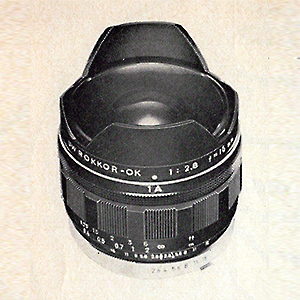| View previous topic :: View next topic |
| Author |
Message |
lumens pixel

Joined: 27 Feb 2019
Posts: 894
Expire: 2021-06-25
|
 Posted: Sun Oct 06, 2024 11:35 am Post subject: Minolta MC 16mm 2,8 fisheye Posted: Sun Oct 06, 2024 11:35 am Post subject: Minolta MC 16mm 2,8 fisheye |
 |
|
lumens pixel wrote:
This is a lens I am "afraid" of. I never felt at ease with ultra wides, even more with fisheyes.
I bought this lens many years ago. I was impressed with its quality, both in terms of manufacturing and image quality. However it spent most of its time stored and almost forgotten.
For unexplained reason I decided to took it for a spin yesterday for a walk at the park. I used it first for general landscape pictures but found that uninteresting. I tried some pics at close distance.
To my eyes focusing under 50 cm would degrade a little bit image quality. However around 0,7 to 1 meter image quality is quite good.
If you don't look for obvious fisheye effect you would need to watch for framing, avoiding tilting much the lens up or down or to locate verticals close to the borders of the frame.
What about your experiences with fisheyes?
 Massif | Flower bled by lumens pixel, sur Flickr Massif | Flower bled by lumens pixel, sur Flickr
_________________
Lumens Pixel
-------------
Minolta SR mount: 16 2,8; Sigma SuperWide 24 2,8; 28 2,5; 28 2,8; 28 3,5; 35 2,8; 45 2,0; 50 1,4; 50 1,7; 50 2,0; 58 1,4; 85 2,0; 100 2,5; 100 4 Macro; 135 3,5; 135 2,8; 200 4; RF 250 5,6; 24-35 3,5; 35-70 3,5; 75-150 4; 70-210 4
Canon FD mount: Tokina RMC 17 3,5; 28 2,8; 35 2,8; 50 1,8; 50 3,5 Macro; 55 1,2; 135 3,5; 135 2,5; 200 4,0; 300 5,6; 28-55 3,5 4,5; Tokina SZ-X SD 270; 70-150 4,5; 70-210 f4; 80-200 4L; Tokina SZ-X 845
Tamron Adaptall: 28-80 3,5-4,2 (27A); 70-210 3,8-4 (46A); 60-300 (23A); 90 2,5 (52B); 35-135 3,5-4,5 (40A)
Tamron SP: 20-40 2,7-3,5 (266D) |
|
| Back to top |
|
 |
RokkorDoctor


Joined: 27 Nov 2021
Posts: 1436
Location: Kent, UK
Expire: 2025-05-01
|
 Posted: Sun Oct 06, 2024 1:46 pm Post subject: Posted: Sun Oct 06, 2024 1:46 pm Post subject: |
 |
|
RokkorDoctor wrote:
I also use the Rokkor MC/MD 16mm/2.8.
In "nature" shots devoid of man-made straight lines I tend to find fish-eyes to render a more natural look than linear extreme wide-angles. Given the significant shift in centre of perspective under the typical print/screen viewing distance of wide-angle shots, fish-eyes tend to preserve the angular geometry in the corners better than linear wide-angle lenses do. But if you observe the print/screen from a very short distance so the angle of view corresponds to the one when the shot was taken, then linear wide-angles look more natural.
Hence IMO a lot depends on the shift in centre of perspective under the anticipated viewing conditions of the final print as to which type of lens will work best (linear extreme wide-angle vs fisheye).
Fish-eye lenses can be very useful for taking single-shot panoramic shots, if you keep the "horizon" level and exactly in the middle of the frame. Combined with de-fishing software like FishEye-Hemi (no longer available I believe), one can do interesting things:
Bath, with Minolta MD FISHEYE ROKKOR 16mm/2.8 + FishEye-Hemi PP & vertical centre crop:

Minolta MD FISH-EYE ROKKOR 16mm f/2.8 on SONY A7S, hand-held at 1/30s at ISO 400, and processed through Fisheye-Hemi (Bath Cathedral)

_________________
Mark
SONY A7S, A7RII + dust-sealed modded Novoflex/Fotodiox/Rayqual MD-NEX adapters
Minolta SR-1, SRT-101/303, XD7/XD11, XGM, X700
Bronica SQAi
Ricoh GX100
Minolta majority of all Rokkor SR/AR/MC/MD models made
Sigma 14mm/3.5 for SR mount
Tamron SP 60B 300mm/2.8 (Adaptall)
Samyang T-S 24mm/3.5 (Nikon mount, DIY converted to SR mount)
Schneider-Kreuznach PC-Super-Angulon 28mm/2.8 (SR mount)
Bronica PS 35/40/50/65/80/110/135/150/180/200/250mm |
|
| Back to top |
|
 |
stevemark

Joined: 29 Apr 2011
Posts: 4086
Location: Switzerland
|
 Posted: Mon Oct 07, 2024 5:33 pm Post subject: Posted: Mon Oct 07, 2024 5:33 pm Post subject: |
 |
|
stevemark wrote:
Another one taken with the Minolta 2.8/16mm Fisheye:

Nobody would suspect a fisheye lens here ...
S
_________________
www.artaphot.ch |
|
| Back to top |
|
 |
lumens pixel

Joined: 27 Feb 2019
Posts: 894
Expire: 2021-06-25
|
 Posted: Mon Oct 07, 2024 7:12 pm Post subject: Posted: Mon Oct 07, 2024 7:12 pm Post subject: |
 |
|
lumens pixel wrote:
Yes in my pic either no one would suspect a fish eye. I do not use Fisheye Hemi but I have tried to "defish" with Hugin Panorama Editor and the result was horrible. There was so many pixels created on borders and angles that apparent sharpness was abysmal. But I am not an expert of that software so maybe another user might have obtained better results.
_________________
Lumens Pixel
-------------
Minolta SR mount: 16 2,8; Sigma SuperWide 24 2,8; 28 2,5; 28 2,8; 28 3,5; 35 2,8; 45 2,0; 50 1,4; 50 1,7; 50 2,0; 58 1,4; 85 2,0; 100 2,5; 100 4 Macro; 135 3,5; 135 2,8; 200 4; RF 250 5,6; 24-35 3,5; 35-70 3,5; 75-150 4; 70-210 4
Canon FD mount: Tokina RMC 17 3,5; 28 2,8; 35 2,8; 50 1,8; 50 3,5 Macro; 55 1,2; 135 3,5; 135 2,5; 200 4,0; 300 5,6; 28-55 3,5 4,5; Tokina SZ-X SD 270; 70-150 4,5; 70-210 f4; 80-200 4L; Tokina SZ-X 845
Tamron Adaptall: 28-80 3,5-4,2 (27A); 70-210 3,8-4 (46A); 60-300 (23A); 90 2,5 (52B); 35-135 3,5-4,5 (40A)
Tamron SP: 20-40 2,7-3,5 (266D) |
|
| Back to top |
|
 |
stevemark

Joined: 29 Apr 2011
Posts: 4086
Location: Switzerland
|
 Posted: Mon Oct 07, 2024 7:49 pm Post subject: Posted: Mon Oct 07, 2024 7:49 pm Post subject: |
 |
|
stevemark wrote:
Interestingly, the Minolta MC 2.8/16mm Fisheye (1968) was the fastest fisheye of its time. Its computation was so good that it was continued into the Sony era, and sold until about 2020 (with slight modifications because of the "environmentally friendly" glass demanded by the EU).
There was a short intermezzo with the smaller and much lighter (260g vs 440g) MD-II / MD-III 2.8/16mm Fisheye. This smaller version is even better than the MC-II/MC-X/MD-I/AF, and uses glass with extreme properties, icluding high refractive (nD=1.8 ) glass, low dispersive LD glass (v=70) and even the proprietary Minolta anomaleous dispersive AD glass (v=82).
http://www.artaphot.ch/minolta-sr/objektive/136-minolta-16mm-f28-fisheye
http://www.artaphot.ch/minolta-sony-af/objektive/237-minolta-sony-af-16mm-f28-fisheye
Later on, the latter probably was considered to be too expensive to manufacture, and the AF version went back to the original computation from 1968.
S
_________________
www.artaphot.ch |
|
| Back to top |
|
 |
RokkorDoctor


Joined: 27 Nov 2021
Posts: 1436
Location: Kent, UK
Expire: 2025-05-01
|
 Posted: Tue Oct 08, 2024 8:25 am Post subject: Posted: Tue Oct 08, 2024 8:25 am Post subject: |
 |
|
RokkorDoctor wrote:
| stevemark wrote: |
Interestingly, the Minolta MC 2.8/16mm Fisheye (1968) was the fastest fisheye of its time. Its computation was so good that it was continued into the Sony era, and sold until about 2020 (with slight modifications because of the "environmentally friendly" glass demanded by the EU).
There was a short intermezzo with the smaller and much lighter (260g vs 440g) MD-II / MD-III 2.8/16mm Fisheye. This smaller version is even better than the MC-II/MC-X/MD-I/AF, and uses glass with extreme properties, icluding high refractive (nD=1.8 ) glass, low dispersive LD glass (v=70) and even the proprietary Minolta anomaleous dispersive AD glass (v=82).
http://www.artaphot.ch/minolta-sr/objektive/136-minolta-16mm-f28-fisheye
http://www.artaphot.ch/minolta-sony-af/objektive/237-minolta-sony-af-16mm-f28-fisheye
Later on, the latter probably was considered to be too expensive to manufacture, and the AF version went back to the original computation from 1968.
S |
And the computation was good enough for Leica to have that lens in their line-up for many years also.
I've never managed to get to the bottom how much of the production happened in Japan and how much in Germany. It is possible that only the glass was made/ground/polished/coated by Minolta in Japan and Leica did the final assembly.
On the other hand, the Minolta and Leica 16/2.8 lenses share so may cosmetic details as well that it is quite feasible most if not all of the lens was made in Japan with mostly Minolta parts and simply a different lens mount and engraving, and then shipped to Germany already fully assembled.
_________________
Mark
SONY A7S, A7RII + dust-sealed modded Novoflex/Fotodiox/Rayqual MD-NEX adapters
Minolta SR-1, SRT-101/303, XD7/XD11, XGM, X700
Bronica SQAi
Ricoh GX100
Minolta majority of all Rokkor SR/AR/MC/MD models made
Sigma 14mm/3.5 for SR mount
Tamron SP 60B 300mm/2.8 (Adaptall)
Samyang T-S 24mm/3.5 (Nikon mount, DIY converted to SR mount)
Schneider-Kreuznach PC-Super-Angulon 28mm/2.8 (SR mount)
Bronica PS 35/40/50/65/80/110/135/150/180/200/250mm |
|
| Back to top |
|
 |
paulhofseth

Joined: 05 Mar 2011
Posts: 577
Location: Norway
Expire: 2018-06-28
|
 Posted: Tue Oct 08, 2024 2:39 pm Post subject: Posted: Tue Oct 08, 2024 2:39 pm Post subject: |
 |
|
paulhofseth wrote:
The mount differences would have required quite a bit of shortening. From looking at my leitz 16mm, the R- aperture mechanics would have involved a completely different treatment than just shaving the end and maintaining minolta mechanics--
Chiyoda kogaku did make some other leicamount lenses; their catadioptric 500 and 800 did not need moving aperture couplings so cuting down the mount would not have needed new moveable innards, just a new bayonet and relocating the rear filter insertion mechanism.
Final assembly of Minolta designed and produced lenses did not take place in Germany, a hypothesis which is strengthened by the inscription "made in Japan" on mine, while Leitz liked to use "made in Germany" when costly fiinishing processes were done there.
I consulted the Erwin Puts book on this . He cryptically speaks of several production sites for the short Minolta zooms two versions, and that some of the first version needed to be discarded by quality contol in Solms. No such comments ad the 16mm; so if the zooms came assembled with working R-type aperture couplings, certainly the 16mms would have come like that as well.
p. |
|
| Back to top |
|
 |
fotografiasol


Joined: 15 Dec 2013
Posts: 64
Location: Argentina
|
 Posted: Sun Oct 13, 2024 6:18 pm Post subject: Posted: Sun Oct 13, 2024 6:18 pm Post subject: |
 |
|
fotografiasol wrote:
".... I never felt at ease with ultra wides, even more with fisheyes." wrote lumens pixel.
I feel the same way. I have a hypothesis about why fisheye lenses are difficult to use. I would like to tell you and ask if you think it is possible.
After taking several photographs with both rectangular and circular fisheye lenses and looking at the photos on my computer monitor, I was surprised by the number of objects included in the photographs that I had not seen when framing.
From these observations I began to think that perhaps the mind is overwhelmed by the amount of information in the images produced by fisheyes, because it is used to handling less information given the much smaller angle of natural vision of the naked human eye and this would cause additional difficulty in achieving a satisfactory framing.
_________________
fotografiasol |
|
| Back to top |
|
 |
stevemark

Joined: 29 Apr 2011
Posts: 4086
Location: Switzerland
|
 Posted: Mon Nov 04, 2024 11:35 am Post subject: Posted: Mon Nov 04, 2024 11:35 am Post subject: |
 |
|
stevemark wrote:
Here's one for the nerds:

Completely unbeknownst to me, there was obviously also an MC-I version of the well known FISHEYE ROKKOR 16mm 1:2.8!
Interestingly, the lens was labelled as "UW ROKKOR", and not as "FISHEYE".
The image shown above was published in the May 1968 issue of PhotArgus. I have no idea whether this MC-I version ever made it to the shops (most probably not). It is not listed in Dennis Lohmanns extensive Minolta SR lens list:
https://minolta.eazypix.de/lenses/index.html
S
_________________
www.artaphot.ch |
|
| Back to top |
|
 |
lumens pixel

Joined: 27 Feb 2019
Posts: 894
Expire: 2021-06-25
|
 Posted: Tue Nov 05, 2024 8:38 am Post subject: Posted: Tue Nov 05, 2024 8:38 am Post subject: |
 |
|
lumens pixel wrote:
| stevemark wrote: |
Here's one for the nerds:

Completely unbeknownst to me, there was obviously also an MC-I version of the well known FISHEYE ROKKOR 16mm 1:2.8!
Interestingly, the lens was labelled as "UW ROKKOR", and not as "FISHEYE".
The image shown above was published in the May 1968 issue of PhotArgus. I have no idea whether this MC-I version ever made it to the shops (most probably not). It is not listed in Dennis Lohmanns extensive Minolta SR lens list:
https://minolta.eazypix.de/lenses/index.html
S |
The hood here is significantly longer than on my MC X copy. interesting.
_________________
Lumens Pixel
-------------
Minolta SR mount: 16 2,8; Sigma SuperWide 24 2,8; 28 2,5; 28 2,8; 28 3,5; 35 2,8; 45 2,0; 50 1,4; 50 1,7; 50 2,0; 58 1,4; 85 2,0; 100 2,5; 100 4 Macro; 135 3,5; 135 2,8; 200 4; RF 250 5,6; 24-35 3,5; 35-70 3,5; 75-150 4; 70-210 4
Canon FD mount: Tokina RMC 17 3,5; 28 2,8; 35 2,8; 50 1,8; 50 3,5 Macro; 55 1,2; 135 3,5; 135 2,5; 200 4,0; 300 5,6; 28-55 3,5 4,5; Tokina SZ-X SD 270; 70-150 4,5; 70-210 f4; 80-200 4L; Tokina SZ-X 845
Tamron Adaptall: 28-80 3,5-4,2 (27A); 70-210 3,8-4 (46A); 60-300 (23A); 90 2,5 (52B); 35-135 3,5-4,5 (40A)
Tamron SP: 20-40 2,7-3,5 (266D) |
|
| Back to top |
|
 |
lumens pixel

Joined: 27 Feb 2019
Posts: 894
Expire: 2021-06-25
|
 Posted: Tue Nov 05, 2024 8:40 am Post subject: Posted: Tue Nov 05, 2024 8:40 am Post subject: |
 |
|
lumens pixel wrote:
| fotografiasol wrote: |
".... I never felt at ease with ultra wides, even more with fisheyes." wrote lumens pixel.
I feel the same way. I have a hypothesis about why fisheye lenses are difficult to use. I would like to tell you and ask if you think it is possible.
After taking several photographs with both rectangular and circular fisheye lenses and looking at the photos on my computer monitor, I was surprised by the number of objects included in the photographs that I had not seen when framing.
From these observations I began to think that perhaps the mind is overwhelmed by the amount of information in the images produced by fisheyes, because it is used to handling less information given the much smaller angle of natural vision of the naked human eye and this would cause additional difficulty in achieving a satisfactory framing. |
I mostly agree with you. Coming very close to the main subject however suppresses some of the peripheral objects and simplifies framing with an obvious main subject. Not so easy nevertheless.
_________________
Lumens Pixel
-------------
Minolta SR mount: 16 2,8; Sigma SuperWide 24 2,8; 28 2,5; 28 2,8; 28 3,5; 35 2,8; 45 2,0; 50 1,4; 50 1,7; 50 2,0; 58 1,4; 85 2,0; 100 2,5; 100 4 Macro; 135 3,5; 135 2,8; 200 4; RF 250 5,6; 24-35 3,5; 35-70 3,5; 75-150 4; 70-210 4
Canon FD mount: Tokina RMC 17 3,5; 28 2,8; 35 2,8; 50 1,8; 50 3,5 Macro; 55 1,2; 135 3,5; 135 2,5; 200 4,0; 300 5,6; 28-55 3,5 4,5; Tokina SZ-X SD 270; 70-150 4,5; 70-210 f4; 80-200 4L; Tokina SZ-X 845
Tamron Adaptall: 28-80 3,5-4,2 (27A); 70-210 3,8-4 (46A); 60-300 (23A); 90 2,5 (52B); 35-135 3,5-4,5 (40A)
Tamron SP: 20-40 2,7-3,5 (266D) |
|
| Back to top |
|
 |
RokkorDoctor


Joined: 27 Nov 2021
Posts: 1436
Location: Kent, UK
Expire: 2025-05-01
|
 Posted: Tue Nov 05, 2024 9:00 am Post subject: Posted: Tue Nov 05, 2024 9:00 am Post subject: |
 |
|
RokkorDoctor wrote:
| stevemark wrote: |
Here's one for the nerds:

Completely unbeknownst to me, there was obviously also an MC-I version of the well known FISHEYE ROKKOR 16mm 1:2.8!
Interestingly, the lens was labelled as "UW ROKKOR", and not as "FISHEYE".
The image shown above was published in the May 1968 issue of PhotArgus. I have no idea whether this MC-I version ever made it to the shops (most probably not). It is not listed in Dennis Lohmanns extensive Minolta SR lens list:
https://minolta.eazypix.de/lenses/index.html
S |
That is interesting!
Especially since it appears to be a photograph of the lens rather than an artist drawing; that seems to prove at least one MC-I production prototype was made.
And lumens pixel are right; the hood petals facing the long side of the frame appear to be a bit longer than those on the eventual production MC-II and MC-X versions.
_________________
Mark
SONY A7S, A7RII + dust-sealed modded Novoflex/Fotodiox/Rayqual MD-NEX adapters
Minolta SR-1, SRT-101/303, XD7/XD11, XGM, X700
Bronica SQAi
Ricoh GX100
Minolta majority of all Rokkor SR/AR/MC/MD models made
Sigma 14mm/3.5 for SR mount
Tamron SP 60B 300mm/2.8 (Adaptall)
Samyang T-S 24mm/3.5 (Nikon mount, DIY converted to SR mount)
Schneider-Kreuznach PC-Super-Angulon 28mm/2.8 (SR mount)
Bronica PS 35/40/50/65/80/110/135/150/180/200/250mm |
|
| Back to top |
|
 |
|
|
